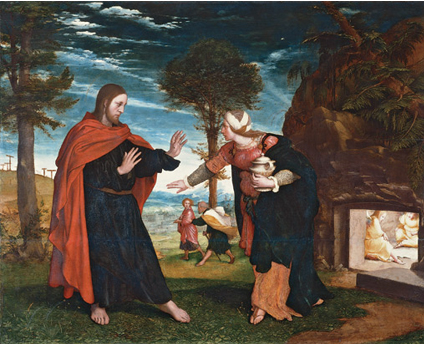EVE IS IN the process of persuading Adam to include more fresh fruit in his diet, but he is yet to be convinced. He stands there, evidently troubled, pondering what would turn out to be one of his poorer decisions. He has the build of a classical statue; she is a long-haired temptress who looks like a cross between a Durer nude and Botticelli's Venus. Adam and Eve, by Jan Gossaert, called Mabuse, is among other things an example of fruitful crossover between Northern and Southern Renaissance painting. It may also be an illustration of how royal patronage can alter the course of the arts in unpredictable ways.
Mabuse's Adam and Eve was painted in the early sixteenth century and given to Charles I by the States-General of Holland in 1636; it was sold, along with the bulk of his works of art, after his execution, and recovered at the time of the Restoration. John Milton, who was appointed Latin Secretary to Cromwell's Council of State in 1649, may have briefly known the painting. His attitude to it would doubtless have been one of reproving, Puritanical distaste, and recollections of Mabuse's imagery may well have coloured the acerbic description of Eve in Book IV of Paradise Lost: ''She as a veil down to the slender waist / Her un-adorned tresses wore / Dishevelled, but in wanton ringlets waved / As the vine curls her tendrils . . .''
The painting may also have been seen by John Evelyn, who visited the royal picture collection in 1680. He got in, he noted in his diary, thanks to ''An ancient Woman, who made these lodgings cleane, & had all the keyes''. She ''let me in at pleasure, for a small reward.'' These days it costs pounds 4.00, paid at the ticket desk...


